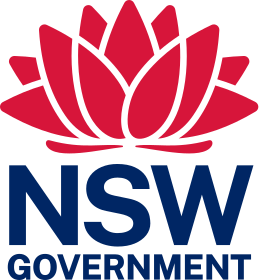Media Releases
Filter content
Stay alert and slow down as school holidays wind down
Motorists should plan ahead with heavy traffic expected at known traffic pinch points throughout NSW as the school holidays come to a close.
Inner West Light Rail to roll into the night
Passengers using the L1 Dulwich Hill line will enjoy extended hours from Monday 29 April, with services now operating from 5am to 1am, seven days a week.
Changed traffic conditions on Hume Highway, Cabramatta
There will be changed traffic conditions on the Hume Highway, Cabramatta over 30 night and eight day shifts between 12 May and 30 June.
Changed traffic conditions along Menangle Road between Glenlee Road and Medhurst Road, Menangle Park
There will be changed traffic conditions from Wednesday 1 May along Menangle Road between Glenlee Road and Medhurst Road, Menangle Park.
Weekend Rail Repair Plan Trackwork
Passengers are urged to plan ahead this weekend, 27-28 April, as essential Rail Repair Plan trackwork continues to build a more resilient and reliable network.
Changed traffic conditions on Racecourse Road, Clarendon
There are changed traffic conditions this weekend at the Clarendon Station level crossing on Racecourse Road for safety improvement works.
Changed traffic conditions in North Sydney from this Friday
Motorists are advised of changed traffic conditions on the Warringah Freeway this weekend, as part of the Warringah Freeway Upgrade.
Commit to driving safely this Anzac Day period
Motorists are being asked to drive safely over the Anzac Day period so that everyone can get home safely to their families and loved ones.
Challenge accepted: new app trial to improve bus accessibility
New technology aimed at supporting members of the community who are blind or vision impaired is being trialled to help access bus services.
Veterans and serving ADF personnel travel for free on Anzac Day
Thousands are expected to attend this year’s Anzac Day Dawn Service at Martin Place and March along Elizabeth Street in the CBD on Thursday 25 April.
Green light on WestConnex 90 km/h from Saturday
As of Saturday, motorists will be able to get around Sydney and back home faster when the speed limit on WestConnex tunnels increases from 80 km/h to 90 km/h.
NSW Government zeroes in on road safety
The NSW Government is doubling roadside enforcement sites used for mobile speed cameras and unveiling more measures to counter the rising number of deaths on our roads, with actions at state and federal level.
Works across Sydney’s road and transport network
Changed traffic conditions on Sydney Harbour Bridge, Warringah Freeway, Sydney Gateway and the WestConnex.
Changed traffic conditions on Narellan Road and Camden Bypass at Narellan
Changed traffic conditions on Narellan Road and Camden Bypass at Narellan
WEEKEND RAIL REPAIR PLAN TRACKWORK
Passengers are urged to plan ahead this weekend, 20-21 April, as essential Rail Repair Plan trackwork continues to build a more resilient and reliable network.
Changed traffic conditions on Kurrajong Road and Cowpasture Road at Carnes Hill
The community is advised of changed traffic conditions from this weekend for work on the Kurranjong Road and Cowpasture Road intersection at Carnes Hill.
Changed traffic conditions on Camden Valley Way and Gregory Hills Drive intersection at Gregory Hills
The community is advised of changed traffic conditions from next week for work on the Camden Valley Way and Gregory Hills Drive intersection at Gregory Hills.
Rumble strips to improve safety on the Mid-Western Highway between Bathurst and Cowra
Work to improve safety along the Mid-Western Highway between Bathurst and Cowra is underway, with the installation of rumble strips.
Repair works underway on Coulsons Creek Road
Work to rebuild Coulsons Creek Road in the Upper Hunter, NSW, is now in full swing following more than $48 million in funding provided.
Tocal Road, Bolwarra Heights set for $1.9 million upgrade
Safer journeys for all motorists moving through Maitland are on their way with upgrade work starting to Tocal Road, Bolwarra Heights.
